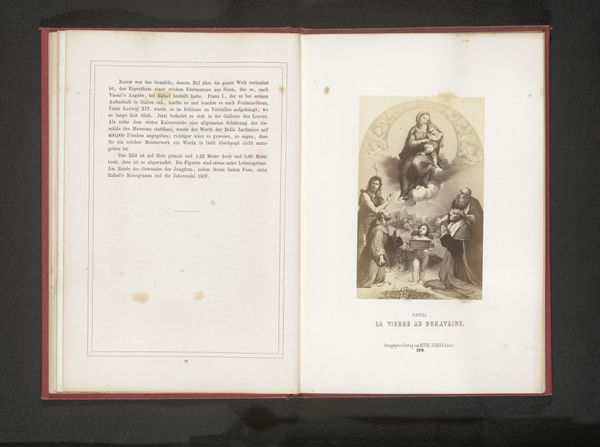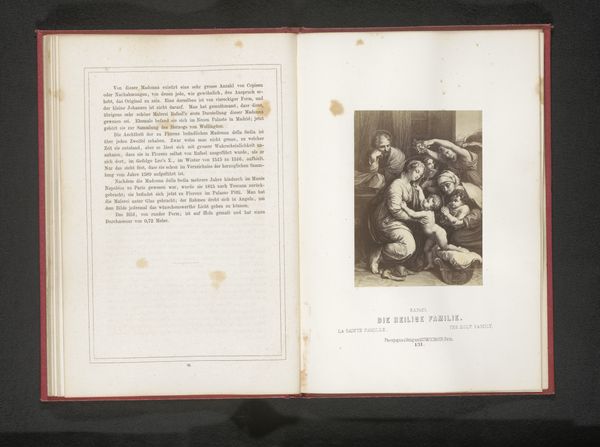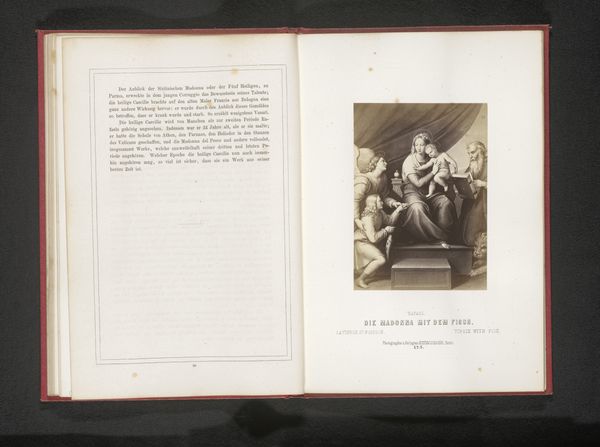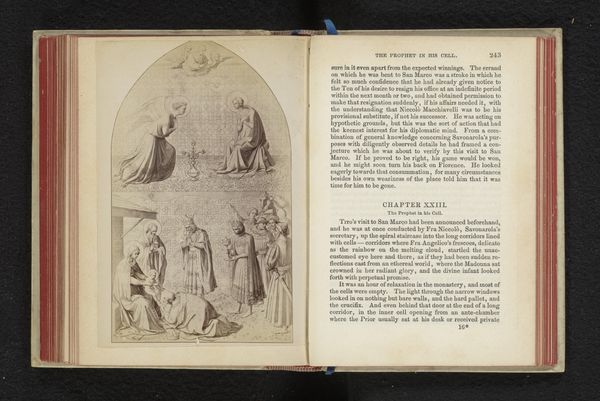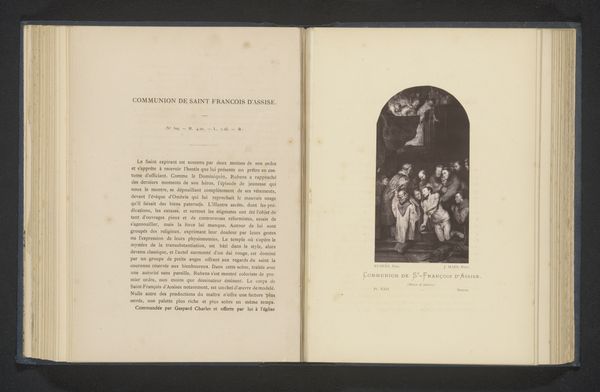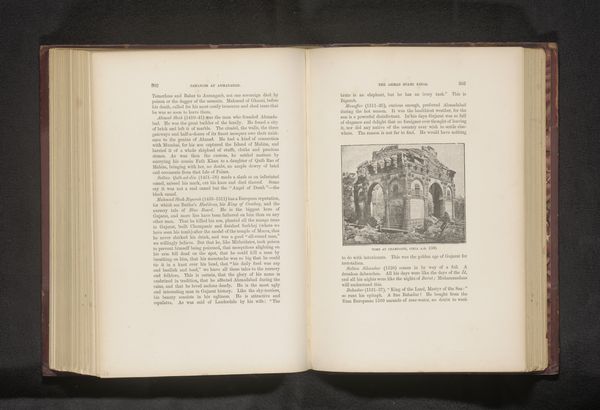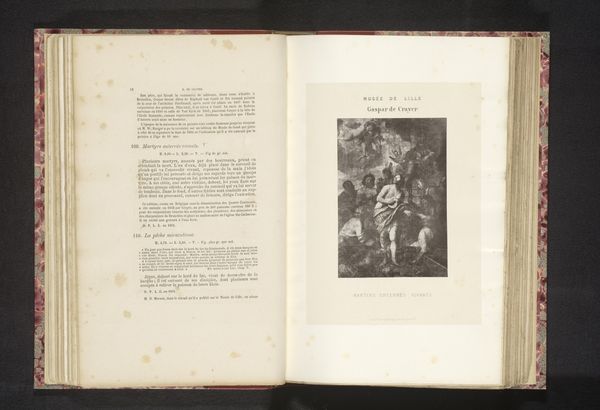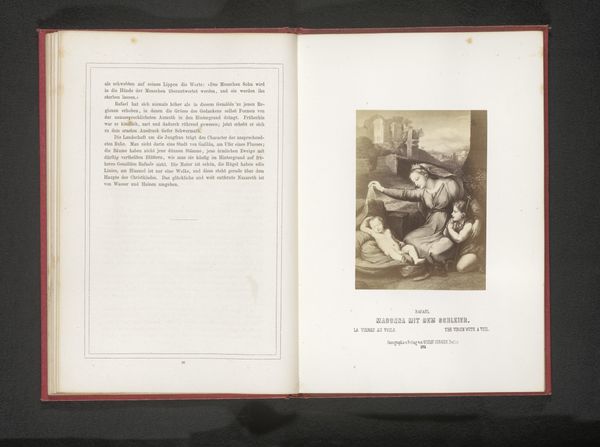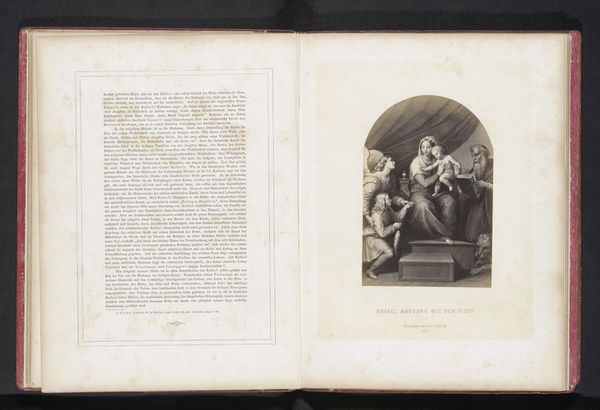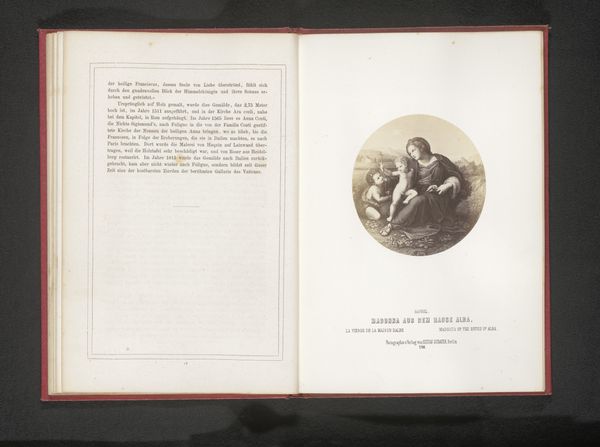
Fotoreproductie van een prent naar een schilderij, voorstellende de extase van de heilige Cecilia before 1861
0:00
0:00
Dimensions: height 132 mm, width 81 mm
Copyright: Rijks Museum: Open Domain
This is a photomechanical print by Gustav Schauer, made in the late nineteenth century, after a painting of the ‘Ecstasy of Saint Cecilia’. It presents Cecilia, the patron saint of music, surrounded by other religious figures, and a host of angels above. This reproduction speaks to the growing public role of art at this time. The late 1800s saw increased art historical scholarship, the rise of public museums, and new technologies of mechanical reproduction like photography. Through these developments, artworks became more widely available to a broader public. The original painting would have been confined to a specific geographic location and viewed by a select group of individuals. Schauer’s print, however, allowed the image to circulate more freely, spreading religious ideas, but also shaping tastes and promoting art appreciation. The print becomes its own cultural object, indicative of the changing ways of seeing and the democratisation of culture. To understand the significance of this print, we can consider the social and technological conditions of its production. We might investigate archives of art criticism, publications on the history of photography, and studies of museum collecting practices. These resources help us understand the social and institutional contexts that give meaning to this artwork.
Comments
No comments
Be the first to comment and join the conversation on the ultimate creative platform.
